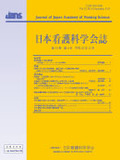Japanese
English
- 販売していません
- Abstract 文献概要
- 参考文献 Reference
- サイト内被引用 Cited by
要旨
目的:出産後の会陰部痛の関連因子と日常生活への影響の総合的な関係性を探索し,会陰部痛に対するケアへの示唆を得る.
方法:都市部の病院3施設,助産所6施設で正期産児を経腟分娩した日本人女性503名に自記式質問紙を配布し,425名の有効回答を得た.
結果:共分散分析の結果,会陰部痛の助長因子は「35歳以上」「初産婦」「仰臥位分娩」「会陰切開」であり,会陰切開は会陰裂傷II度よりも産褥0日から4日の痛みの軽減が有意に少なかった.また共分散構造分析の結果,日常生活の中で【座位への支障】と【動静への支障】が特に大きく,「初産婦」「会陰損傷の程度」「会陰部痛の程度」が支障の増強因子であった.性生活の再開では,「初産婦」と「日常生活への支障」が不安の増強因子である一方,「周囲の心理的理解」は不安の軽減因子であり,会陰ケア満足度を高める因子でもあった.
結論:会陰部痛が緩和するケアをより充実させる必要性が示唆された.
Abstract
The aim of this study was to explore factors associated with perineal pain and disruption of daily life during early the postpartum period. A questionnaire survey was distributed to 503 women who had a vaginal and full-term delivery prior to their discharge from the hospital: 425 responded (85%). One-way analysis of variance, analysis of covariance and structural equations model were performed. Mean age was 32.7 (SD=4.8) and 206 (48.5%) women were primiparous. Episiotomies were performed on 141 (33.2%) women, 121(28.5%) women had a second-degree laceration, 109 (25.6%) women had a first-degree laceration and 54 (12.7%) women had other perineal trauma. Factors associated with early postpartum perineal pain included: “over age 35,” “primiparous,” “supine position at delivery” and “episiotomy.” Women with an episiotomy felt significantly less pain relief from the day of delivery to the fourth day postpartum than those with a second-degree laceration (p<.05). The structural equation model revealed that three factors disrupted women's daily life in the early postpartum period: “primiparous,” “perineal trauma,” and “perineal pain.” “Primiparous” and “disruption of daily life” were the factors that increased their anxiety about resuming of sexual intercourse. However, “psychological support” reduced anxiety about the resumption of sexual intercourse and also enhanced satisfaction with perineal care.
Copyright © 2013, Japan Academy of Nursing Science. All rights reserved.


